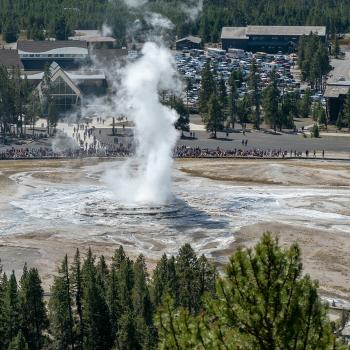
Some notes from Janice Miner Holden, Bruce Greyson, and Debbie James, eds., The Handbook of Near-Death Experiences: Thirty Years of Investigation (Santa Barbara, Denver, and Oxford: Praeger, 2009):
“By the early 1970s, resuscitation technology had advanced to the point where people were being brought back from the brink of death in numbers unprecedented in human history. . . . For the first time in history, enough people were reporting this type of experience that professional health care providers began to discern patterns in the experience itself and in the aftermath of it.” (2)
1975, Raymond Moody, who already held a doctorate in philosophy but was now a medical student, published his epoch-making bestseller Life after Life, in which — among other things — he coined the phrase near-death experience.
Some appear to assume that it was only then that such experiences began to be chronicled. This, however, is far from the truth. “Indeed, accounts of near-death and out-of-body experiences can be found in the oral traditions and written literature of about 95 percent of the world’s cultures” (2).
“In 1825, Henry Schoolcraft described an account in his book Travels in the Central Portion of the Mississippi Valley. In 1872, David Livingstone, of ‘Dr. Livingstone, I presume’ fame, described what we now call an NDE in his book Adventures and Discoveries in the Interior of Africa. Just one year later, Samuel Woodworth Cozzens related an account in his book The Marvelous Country: Three Years in Arizona and New Mexico. Before 1900, at least six other authors . . . published books containing NDE accounts. Among these was Francis Power Cobbe’s 1882 book The Peak in Darien; in it, she recounted NDEs in which the experiencers encountered deceased people who were not at the time known to be deceased.” (2-3).
And so forth. (Other examples are given.)
Are such experiences merely subjective by-products of brain activity? Maybe. But that proposition needs to be demonstrated, not merely asserted.
“Presumably, every experience has correlations with brain activity, but that correlation does not imply that the brain activity caused the experience; rather, the brain could be mediating or reflecting it. As an analogy, measurable electromagnetic activity in one’s television set is correlated with — and, in fact, is essential to — one’s ability to view a televised program. But the source of the program is elsewhere; the electromagnetic activity did not ’cause’ the program but only made it perceivable through the television. Similarly, if someone listening to music were also being monitored for brain activity, such activity would be evident, but no one would conclude that the origin of the music was in the brain. Similarly, physiological correlates of NDEs do not warrant the conclusion that those processes caused the experience. It might be that as NDErs tend to assert, often adamantly, those correlates simply describe the conditions of experiencing a reality usually unavailable to perception.” (11-12)











